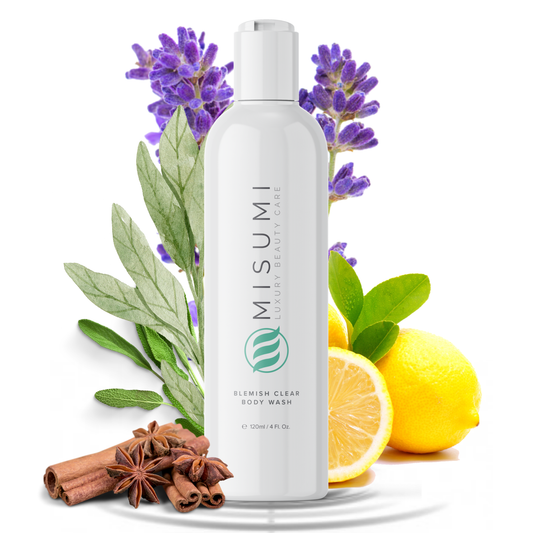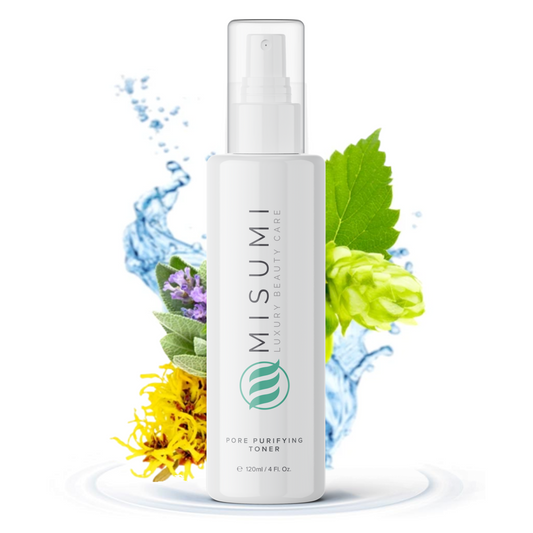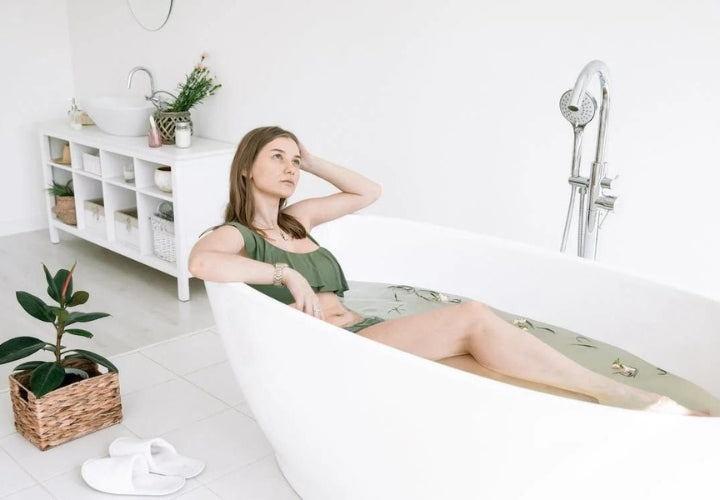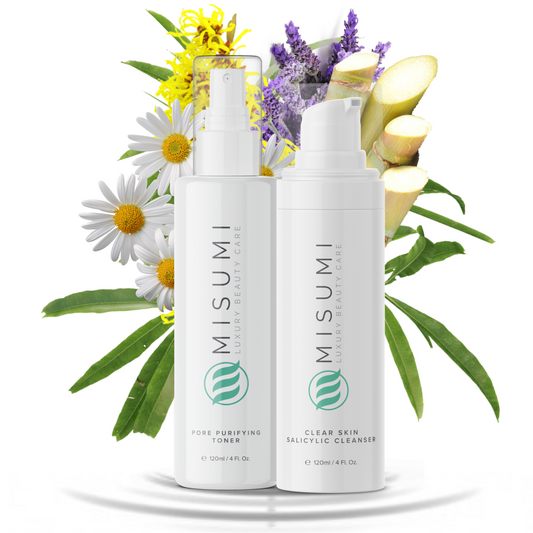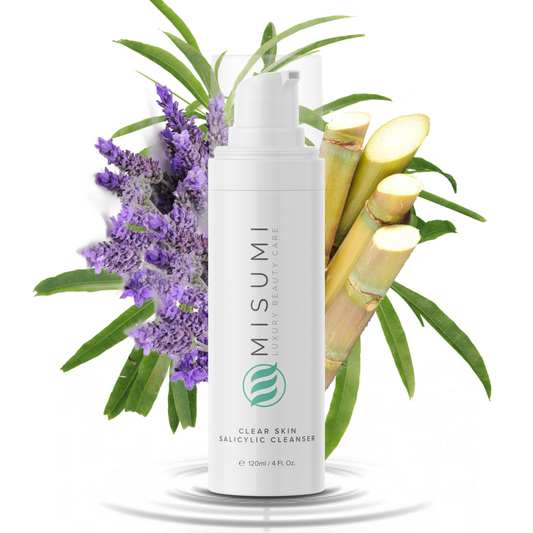If you've ever noticed tiny bumps on your face after exfoliating, you're not alone. This is a common issue that can happen to anyone, regardless of skin type or age. These bumps can be frustrating and even embarrassing, but they don't have to be a permanent problem.
In this article, we'll take a closer look at what causes these bumps, how to prevent them, and what you can do to treat them.
What Are Tiny Bumps on Face After Exfoliating?
Tiny bumps on the face after exfoliating are a common reaction to removing dead skin cells. When you exfoliate, you're essentially removing the top layer of dead skin cells, allowing oil, dirt, and bacteria that were trapped deep within pores to come to the surface. The blemish that results is actually the body's way of expelling toxins completely.
However, if the bumps are small, rough, and bumpy pimples, it could be a sign of over-exfoliation. It's important to pay attention to your skin and understand what it's telling you.

How to Prevent Tiny Bumps on Face After Exfoliating
The best way to prevent tiny bumps on the face after exfoliating is to pay attention to your skin and adjust your routine accordingly. If you notice any redness, peeling, or tingling, it's a sign to cut back on exfoliation. It's also important to choose the right products for your skin type.
If you have sensitive skin, opt for a gentle exfoliating cleanser or a chemical exfoliant like glycolic acid or lactic acid. These types of exfoliants are less abrasive than physical exfoliants like scrubs and grains and are less likely to cause irritation or inflammation.
It's also important to moisturize your skin regularly. Dry skin is more prone to irritation, which can lead to tiny bumps and other skin issues. Choose a moisturizer that's appropriate for your skin type and use it regularly to keep your skin hydrated and healthy.
How to Treat Tiny Bumps on Face After Exfoliating
If you've already developed tiny bumps on your face after exfoliating, don't panic. There are several things you can do to help treat the issue and get your skin back to its baseline texture.
One of the most important things you can do is to stop exfoliating until the skin has healed. This may mean taking a break from exfoliating for a few days or even a week, depending on the severity of the issue.
In the meantime, focus on gentle cleansing and moisturizing. Use a mild cleanser that's appropriate for your skin type and follow up with a moisturizer that's designed to hydrate and soothe irritated skin. Aloe gel is a great option for calming inflammation and redness.
If the issue persists, you may want to try incorporating a chemical exfoliant like salicylic acid into your routine. This type of exfoliant helps to expedite skin cell turnover, which can help to prevent the buildup of dead skin cells and other debris that can lead to tiny bumps.
Finally, if you're struggling with persistent tiny bumps on your face after exfoliating, it may be time to see a board-certified dermatologist. A dermatologist can evaluate your skin and provide personalized recommendations for treating the issue.

Different Types of Milia
Milia are tiny white or yellowish bumps that appear on the skin's surface. These small bumps are often mistaken for whiteheads, but they are not acne. There are two types of milia: primary and secondary.
Primary milia are common in infants and typically go away on their own within a few weeks. Secondary milia are more common in adults and occur as a result of damage to the skin, such as a burn or blistering.
How Long Does It Take for The Skin to Purge?
The length of time it takes for the skin to purge varies depending on the individual. Typically, the skin takes anywhere from two to six weeks to completely purge itself of impurities.
During this time, the skin may experience an increase in blemishes, which can be discouraging. However, it is important to be patient and trust the process. Once the skin has purged, it will be smoother, clearer, and more radiant than before.
Common Forms of Acne During a Skin Purge
During a skin purge, it is common for acne to surface. There are several forms of acne that can appear, including blackheads, whiteheads, papules, pustules, and cysts. Blackheads and whiteheads are the most common types of acne during a skin purge. These small, raised bumps on the skin's surface are a result of clogged pores.
Treating A Skin Purge Vs. A Breakout
Treating a skin purge is different from treating a regular breakout. During a skin purge, the goal is to help the skin expel impurities and detoxify. This can be achieved by using gentle, non-comedogenic products and avoiding harsh scrubs and exfoliants.
On the other hand, treating a regular breakout involves targeting the specific type of acne with topical treatments or medication.
What Causes Skin Purging?
Skin purging is a natural process that occurs when the skin is detoxifying and expelling impurities. This can be caused by a variety of factors, including starting a new skincare regimen, over exfoliated skin, or using products that contain active ingredients like retinoids or alpha hydroxy acids.

What Ingredients Cause Purging?
Some ingredients are known to cause purging. These include:
- Retinoids: Retinoids are a type of vitamin A derivative that are commonly used to treat acne, fine lines, and wrinkles. These powerful ingredients can cause the skin to purge as they increase cell turnover and stimulate collagen production.
- Alpha Hydroxy Acids (AHAs): AHAs are a type of chemical exfoliant that are commonly used to treat acne, hyperpigmentation, and signs of aging. These ingredients can cause the skin to purge as they remove dead skin cells and increase cell turnover.
- Beta Hydroxy Acids (BHAs): BHAs are another type of chemical exfoliant that are commonly used to treat acne and clogged pores. These ingredients can cause the skin to purge as they unclog pores and remove dead skin cells.
Overall, skin purging is a natural and necessary process that can lead to clearer, smoother, and healthier-looking skin. While it can be frustrating to experience an increase in blemishes during this time, it is important to be patient and trust the process.
By using gentle, non-comedogenic products and avoiding harsh exfoliants, you can help your skin purge and detoxify effectively.
Common Forms of Acne During a Skin Purge:
During a skin purge, you may experience several different types of acne, including blackheads, whiteheads, pustules, and cysts. Blackheads and whiteheads are the most common types of acne that occur during a skin purge.
They form when hair follicles become clogged with sebum and dead skin cells. Pustules and cysts, on the other hand, are more severe types of acne that form when the hair follicle becomes infected with bacteria.
Bumps due to ingrown hairs
In some cases, tiny bumps on the face after exfoliating may be due to ingrown hairs. These bumps can be red, inflamed, and painful, and they can occur anywhere on the face where hair grows.
To prevent ingrown hairs, be sure to exfoliate regularly and use a sharp, clean razor when shaving. You can also try using products that contain salicylic acid or glycolic acid to help keep the hair follicles clear and prevent ingrown hairs from forming.

What Does Skin Purging Look Like?
Skin purging can look like small, raised bumps on the skin, similar to acne breakouts. However, unlike traditional acne breakouts, purging typically occurs in areas where you don't normally experience breakouts. For example, if you usually only experience acne on your forehead, skin purging may cause bumps or peeling skin to appear on your cheeks or chin.
When Does Skin Purge Start?
Skin purging typically starts within a few days of using a new skincare product that is designed to increase cell turnover or exfoliate the skin. However, it's important to note that not everyone will experience skin purging, and it may not occur with every new product.
Is Skin Purging a Good Thing?
While skin purging can be frustrating and uncomfortable, it's generally considered a good thing. Skin purging is a sign that the product is working and that your skin is renewing itself. Once the purging process is complete, you should notice clearer, smoother skin.
Tips For Helping During Your Purge:
- Be gentle with your skin: Avoid harsh scrubs or abrasive exfoliants that can further irritate your skin.
- Stay hydrated: Drink plenty of water to help flush toxins out of your body and keep your skin hydrated.
- Be patient: Skin purging can take some time, so be patient and stick to your skincare routine.
- Avoid picking: Avoid picking at or popping any pimples or bumps that may appear during the purging process.
- Seek professional help: If your skin purging is severe or doesn't improve after a few weeks, consider seeking advice from a dermatologist.
How Do You Know If You're Purging Or Breaking Out?
It can be difficult to tell the difference between purging and a traditional breakout. However, purging typically occurs in areas where you don't normally experience breakouts, and the bumps are typically small and surface quickly. Breakouts, on the other hand, can occur anywhere on the face and may be larger and more painful.
How Long Will Skin Purging Last?
The duration of skin purging varies from person to person. It typically lasts between one and six weeks, but in some cases, it may last up to three months. However, if you're experiencing a skin purge that lasts longer than three months, it's best to consult a dermatologist.
When Does Skin Purge Start?
Skin purging usually starts within a few days of starting a new skincare product or regimen. It can also occur after a deep cleansing facial or a professional chemical peel.
Rejuvenate Your Skin with Misumi Complete Clear 3-Step System
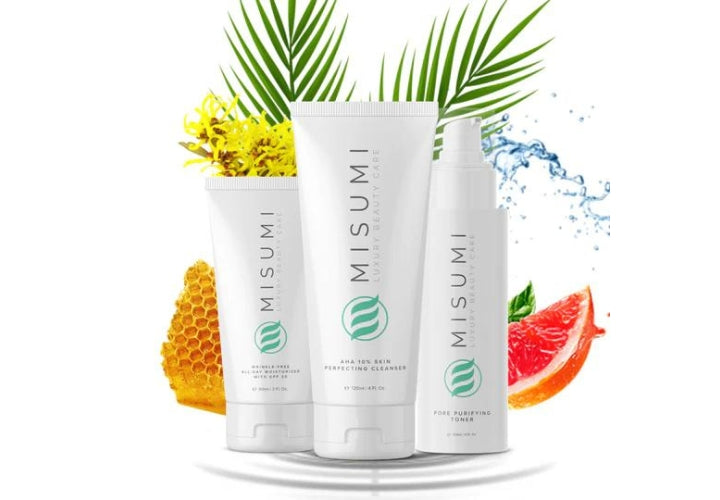
In the quest for rejuvenated, healthy skin that radiates health and vitality, the key is adopting a comprehensive skincare routine that addresses your skin's needs at every step.
Enter the Misumi Complete Clear 3-Step System, a trio of products specifically formulated to cleanse, tone, and moisturize while targeting common skin concerns like acne and signs of aging.
AHA 10% Skin Perfecting Cleanser
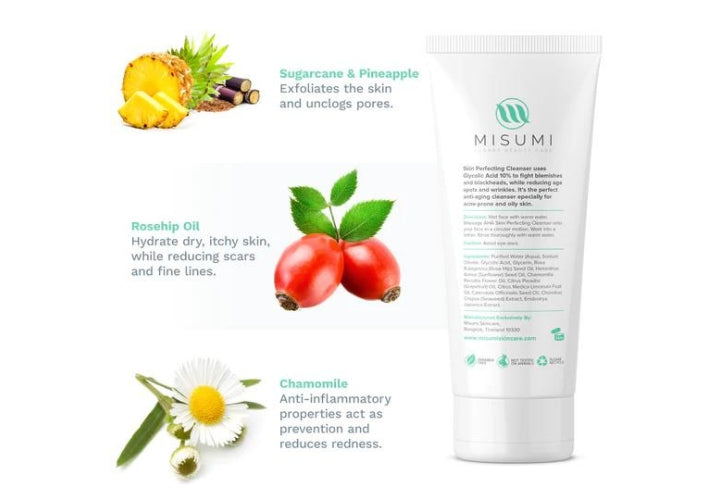
The journey towards rejuvenated skin starts with a thorough cleanse, and Misumi's AHA 10% Skin Perfecting Cleanser takes this essential skincare step to the next level. As the name suggests, this product is formulated with a potent 10% concentration of Alpha Hydroxy Acids (AHAs), known for their effective exfoliating properties.
Working to gently remove dead skin cells, the AHA 10% Skin Perfecting Cleanser unclogs pores, mitigates breakouts, and encourages the emergence of new skin cells. This leads to a brighter, smoother complexion and serves as an excellent foundation for the subsequent steps in your skincare routine.
Pore Purifying Toner
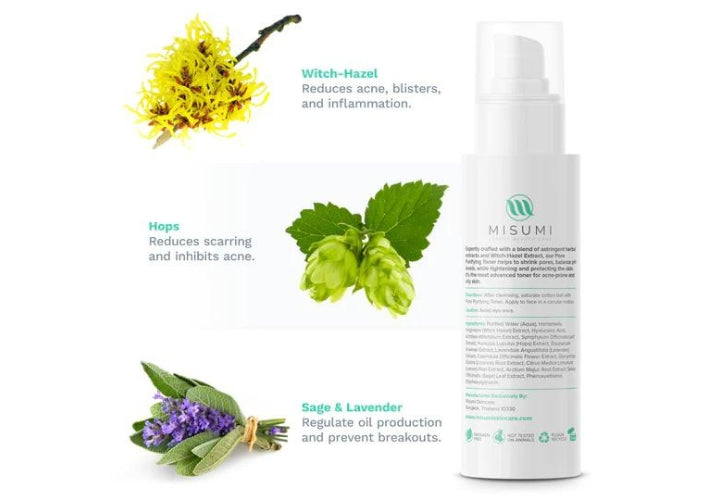
Following cleansing, Misumi's Pore Purifying Toner steps in to deliver a second wave of purification. This toner has been designed to capture any residual impurities that might have been missed during the cleansing stage, ensuring your skin is as clean and clear as possible.
A thoroughly cleansed skin surface allows for the minimization of pores and provides a perfect canvas for the application of moisturizers and treatments. The inclusion of Witch Hazel in the formulation also offers anti-inflammatory benefits, which can soothe irritation and contribute to an overall healthier complexion.
Wrinkle-Free All Day Moisturizer with SPF 30
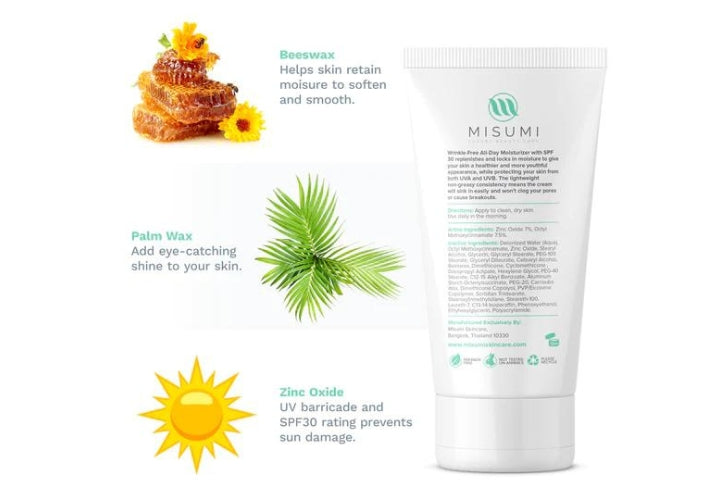
The final step in the Misumi Complete Clear 3-Step System is the Wrinkle-Free All Day Moisturizer with SPF 30. This product fulfills the dual role of hydrating the skin and protecting it against harmful UVA and UVB rays - a crucial factor in any skin care regimen.
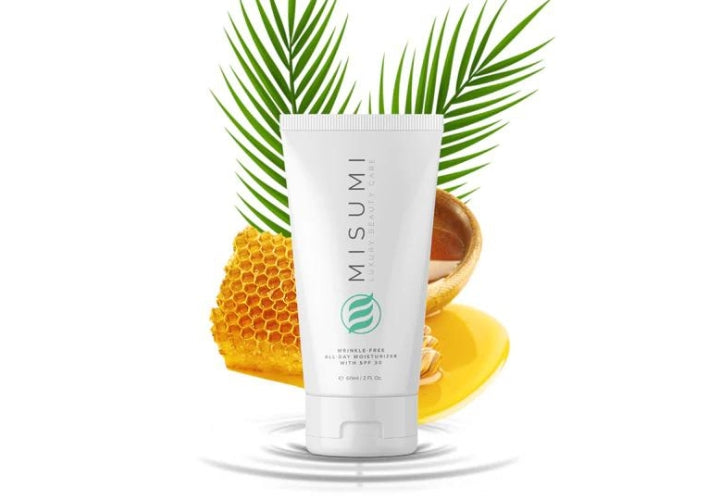
This moisturizer is not only nourishing but also works to tackle signs of aging, including fine lines and wrinkles. With its broad-spectrum SPF 30 protection, it ensures that your skin is shielded from sun damage, which can accelerate the aging process and lead to other skin issues.

Conclusion
Tiny bumps on the face after exfoliating can be a frustrating and embarrassing issue, but they don't have to be a permanent problem. By paying attention to your skin, adjusting your skin care routine as needed, and seeking professional help if necessary, you can get your skin back to its healthy, glowing best.
Remember, prevention is key. By choosing the right products for your skin type, moisturizing regularly, and being gentle.
